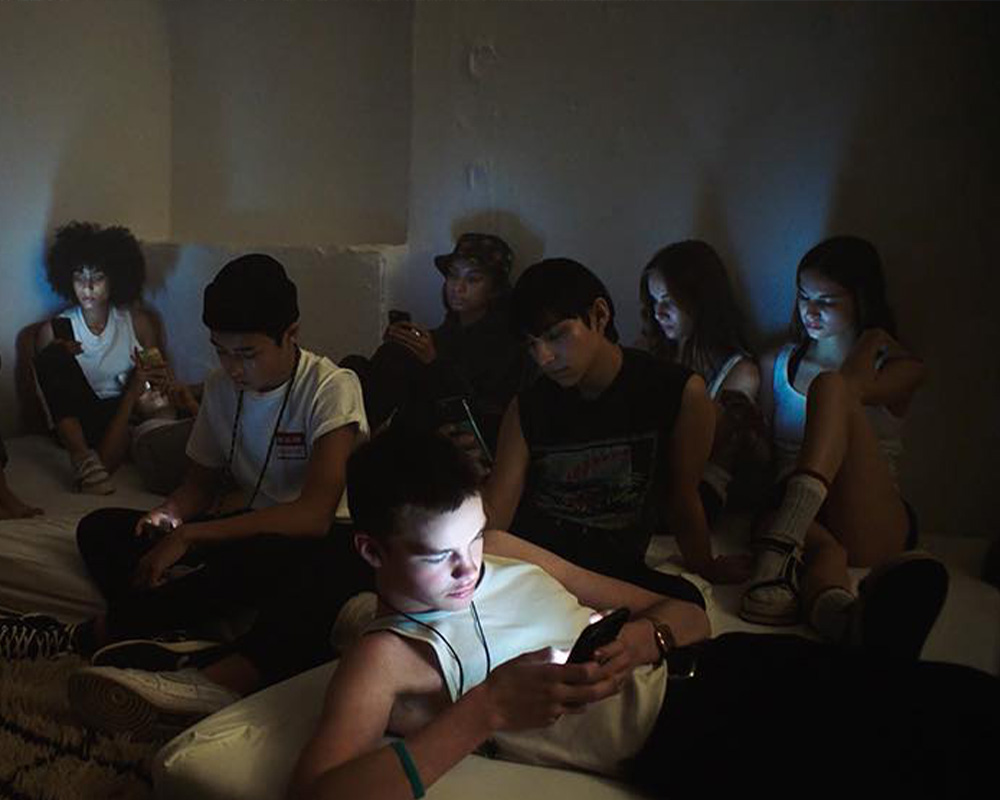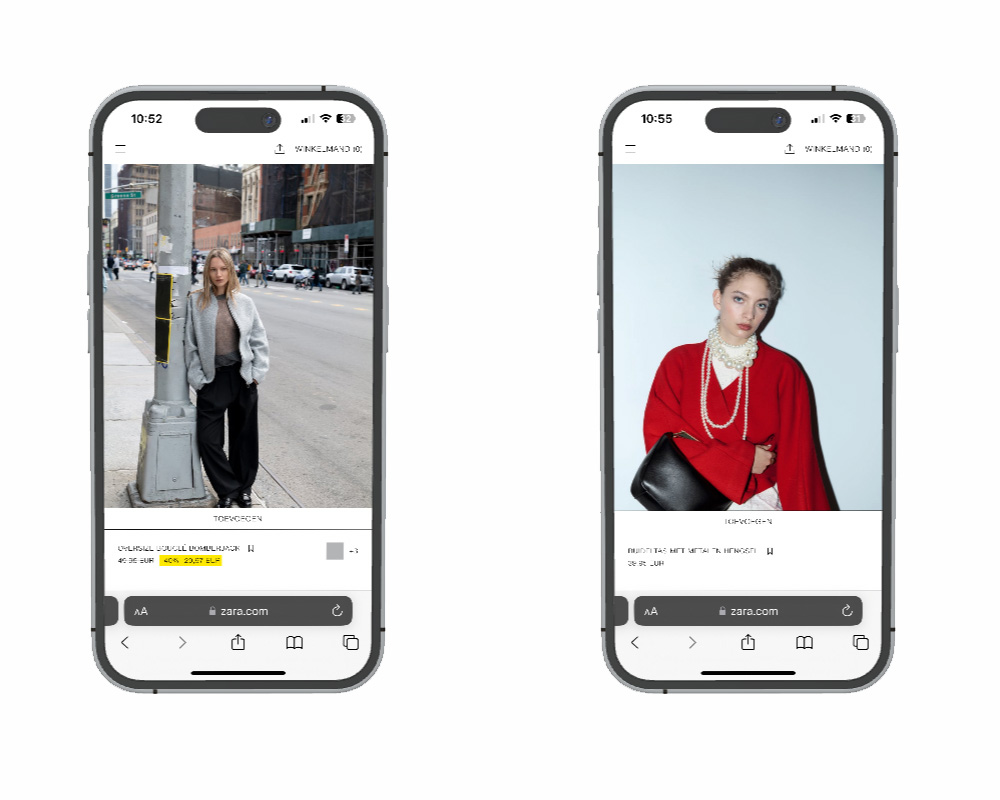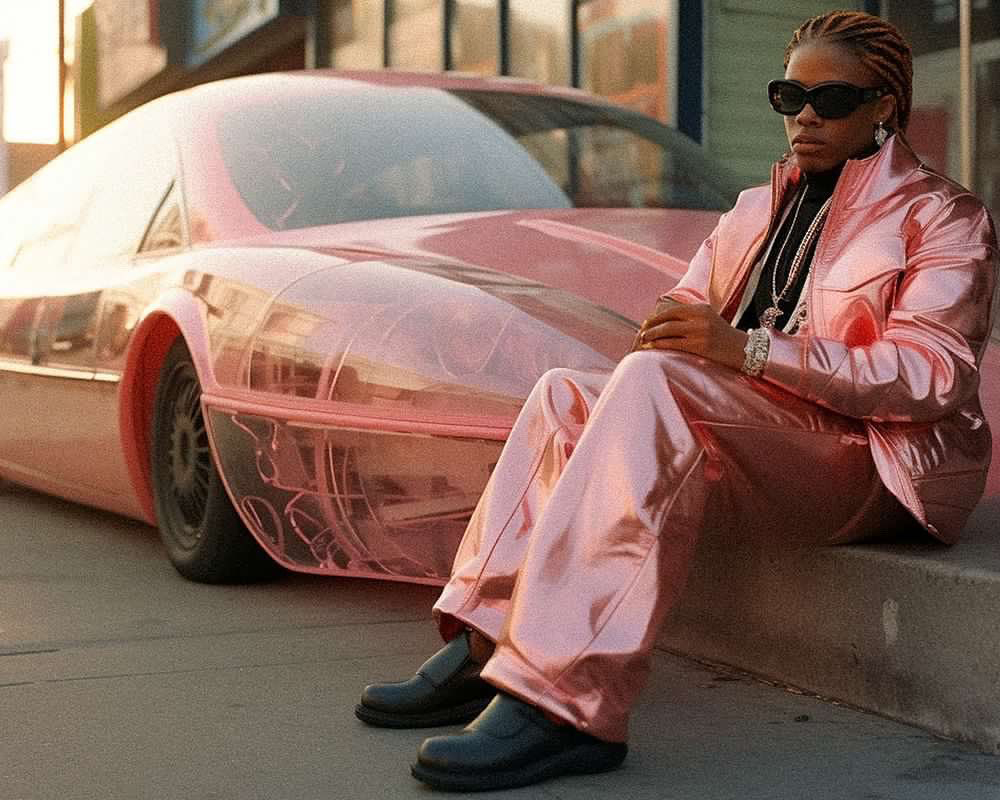Influencer marketing, omni-channel, Chatbots, Growthhacking! We’ve seen a lot of buzzwords emerge in the landscape of online media in recent years. In 2023, we have an old acquaintance knocking on the door.
User Generated Content. Even if you haven’t encountered it directly, its essence is familiar: it’s the phenomenon where users organically create photo, video, or textual content, authentically capturing their experiences with or about your product.
In this article, we delve into why User Generated Content stands as not just another passing trend, but as a relevant and when done right, perhaps the most strategic marketing methodology.

What’s UGC – and where is it used?
User Generated Content (UGC) isn’t a new concept; its roots stretch back decades. However, its evolution from a robust methodology to a vital strategic tool has only recently become so clear. To comprehend our current trajectory, it’s important to take some steps back. Here’s a compressed history of UGC:
Decades ago, UGC thrived within forums where individuals shared reviews and experiences, dating back to the early 1990s, the dinosaur age of the internet.
The term ‘User Generated Content’ gained prominence during the rise of Web 2.0 in the early 2000s, coinciding with the advent of blogs, Wikipedia, and the pioneering social media platforms like MySpace and Facebook.
The transformative shift came around 2010 with the entry of smartphones, offering everyone the ability to effortlessly share audiovisual content worldwide. This accessibility, coupled with affordable internet, led to the dominance of social media platforms, significantly fueled by UGC.
Our contemporary era sees a departure from traditional media, especially among the upcoming generations: Gen Z & Alpha. Social media has become our hub for watching, searching, engaging, and evaluating authenticity. Gen Z and Gen Alpha possess a sharp lens for discerning authenticity, distinguishing between genuine content and manipulative attempts.
As social animals, humans crave connection, and UGC resonates deeply in this sphere. When making purchasing decisions, we often seek guidance from trusted circles or previous consumers rather than relying solely on sales pitches. According to Search Engine Journal, content featuring user photos/videos sees a 62% higher click-through rate.
In essence, UGC aligns with our instinctive pursuit of authenticity and social connection, shaping not just our consumption patterns but also defining the future landscape of marketing.

Influencer Marketing vs UGC
In the past decade, the influencer phenomenon exploded, with companies tapping into emerging content creators on social media to reach wider audiences. Initially introduced to describe those who could sway opinions, today’s consumers are less easily influenced by them.
Promotions by accounts with huge followings using discount codes can feel manipulative to viewers, reducing their likelihood to act. The distinction between influencers and User Generated Content (UGC) is mainly about influencers revealing their commercial intent, weakening authenticity and connection.
As noted earlier, authenticity is paramount for Gen Z and Alpha. This is where the significance of UGC lies. Overly commercial messages are overlooked; staying genuine is key in the influencer landscape. The rule is clear: failing to adapt and remain authentic leads to irrelevance soon enough.

Social Shopping
Social media traditionally held a crucial role in the “Awareness” phase of a customer’s journey, serving as the gateway to introduce potential users to products, services, or communities. As in many aspects of life, the initial encounter is most important.
Social Media as a Search Engine
Social media has shifted. Have you also started using TikTok, Instagram, or YouTube as search engines? From finding restaurants to checking reviews, or rediscovering forgotten fashion, this trend isn’t just an observation; it’s a marco shift. In fact, 92% of consumers now check reviews on social media before buying.
Why the Social Shopping Shift is Happening?
The driving force behind social shopping? Money. Think about it: you spot a friend with a purse you had your eye on, then exactly that bag appears in a creators styling short. What’s next? A hunt for deals on Google. Social media giants hate this—they obviously want you to spend more time on their platform. The solution to this phenomenon involves social shopping, which retains conversions within their own turf. It’s a power move, banking on, and collecting all data. Keep you glued to spend more time and money, and sell your attention to hungry enterprises.
The Phygital Trend in Social Shopping
The post-pandemic era tought us Gen Z’ers are embracing phygital experiences, blending real-life with digital for immersive user engagement. From AR filters to the VR world of Gucci Vaults, these initiatives, (when well-executed) heighten experiences, boosting relevance and authenticity. It’s a trend and observation worth mentioning. A campaign can’t be deemed 360 degrees complete if it lacks a digital experience.
The Growing Importance of Social Media SEO
The expanding role of Social Media SEO is evident. While Pinterest has long prioritised SEO, creators on platforms like IG and TikTok are now recognising its importance. Yet, the ever-changing algorithm surpasses SEO in influence. While textual optimisation matters, the dynamic algorithm significantly shapes visibility.

Global brands, showing how UGC is done
Now that we’re understanding the significance of UGC, we’ve gathered a selection of companies that exemplify its effective utilisation. Let’s have a look shall we?
ZARA
The emperor of contemporary UGC is undoubtedly ZARA. They have undertaken numerous applications to place the user at the center and – in this way – convinced consumers to engage with their products. ZARA has, at certain moments over the past decade, acquired a stiff and dull image. However, that is now completely outdated.
@zara How to style a layered outfit by @couturekulten #zara ♬ original sound – ZARA
But ZARA doesn’t stop there. Their website has undergone a transformation, integrating UGC frames on category and product pages. Instead of the conventional, flawless pack shots, these pages now exhibit numerous items within a UGC context, inviting a more relatable and engaging experience: have a look.

MAC COSMETICS
Mentioning beauty, the name MAC Cosmetics cannot be left out. MAC demonstrates how they understand their users and tailor their social media marketing to them. MAC clearly shows that they position themselves as progressive and inclusive, while also backing up their words with actions. It works extremely well for them, and on their website, they also feature tutorials from users.
@maccosmetics Pick your preferred foundation application ⚡🖌️. #MACStudioRadiance #SerumPowered Makeup Artist: @ivankgadi ♬ GASLIGHT – INJI

MCDONALDS
Then we take a step towards the flagship of American cuisine: McDonald’s. McDonald’s is very powerful when it comes to marketing, and they have completely mastered the UGC shift. What stands out at McDonald’s is that they use UGC to influence the end-user, but they also use UGC to attract new talent.
It makes perfect sense, considering their growth goals and the somewhat dull image McDonald’s contends with. To meet these objectives and counter the challenge of an uninspiring image, McDonald’s is strategically focusing on enticing the next generation to join their workforce.
@mcdonalds major perks of the job #socialmediamanager #mcd ♬ original sound – McDonald’s
Honourable mentions leveraging UGC
There’s a whole roster of enterprises that truly grasp the power of UGC. Here’s a handful of examples worth diving into:

The future of UGC
UGC is here to stay, that’s for sure. If you’ve come this far, you will agree with us that companies will become completely irrelevant if they don’t make the shift to genuine forms of content creation. UGC is a means to gain name recognition, authenticity, sincerity, and trust. It can’t get any better, right? Actually, it can: it’s very cheap to produce compared to traditional media.
Consumers want companies that work omnichannel and are well-represented. In 2023, there are numerous channels to access information. People search on Google, TikTok, YouTube, IG, etc., for information about goods or services.
Ready to use insights
They say there’s a pot of gold at the end of the rainbow, right? Here are some valuable and applicable insights you gathered from this article:
- Research is everything. If you don’t know who you’re targeting, how to reach them, and with what message, it’s evident you’re not authentic enough. Gen Z and Alpha can sense this from afar, and you’re at the bottom of the trust ladder.
- On e-commerce, find the sweet spot. Use UGC and very crisp content to strike a balance between engagement and aesthetics for the ultimate UX.
- Include ‘phygital’ in campaigns—AR filters for social, games, but never forget real life.
- Keep investing in and exploring collaborations with creators. Utilise this content to demonstrate your authenticity to the world.
- Invite creators to activations/events to capture and distribute. Involvement in co-creation is powerful.
- Stop using and assuming that the big stars of the world carry the most relevance. The more niche you can get, the more impact and stronger the engagement.
- UGC is not just content created from the buyer/consumer point of view. It’s also a great tool to source talent.
As we close, it’s essential to acknowledge that the landscape of UGC will keep evolving. The emergence of Web 3.0, the strengthening force of AI, and the resounding call for authenticity in our interconnected world will continue to shape and redefine the future of user-generated content.
Stay flexible, stay real, and embrace the change. We’re heading towards a world where authenticity stands above all.













